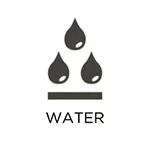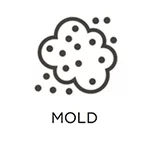RestorationMaster thanks you for choosing us as your emergency flood cleanup and water damage repair provider. Our technicians fully understand that this can be one of life’s most stressful experiences; however, we guarantee that you have chosen the best professionals to get the job done right the first time. While this may be your first time using restoration services, our technicians have been providing these services for many years. With ongoing training and experience, RestorationMaster has been highly recommended by numerous homes and businesses for restoration services. We don’t just return homes back to normal, we help get families and businesses back on track in the least amount of time possible.
The information provided below is a checklist created at your convenience to show you what services your property will require in order to return it to its original condition. A brief description is also provided to explain what it is and why it needs to be done.
Of course, not everything on this list will apply to you, but the information can provide some more insight to our processes when restoring your property. The water extraction technician will go over everything with you upon arrival, answering any questions you may have along the way. You can also refer to our FAQ Water Damage Cleanup page if you need more information during non-business hours.
Identifying the Source of the Problem and the Extent of the Damage
A complete inspection using effective moisture-detection meters with sensors and probes will be able to identify the source of the damage. In addition, it can also determine how far it has spread so the technician can focus on the additional affected areas. A custom plan will then be developed according to the findings in order to provide the most effective services possible. We will also check for the most commonly known causes of water damage that include: hoses, broken pipes, water leaks, etc. A photograph will then be taken for documentation for us and your insurance provider.
✔Examine the attic. Any insulation, framing, and items in storage may need to be inspected for water damage, or even protected if they are at risk.
✔Examine the basement. As water follows the law of gravity, the basement is most prone to water damage if enough time has been allowed for it to seep underground.
✔Examine air duct system. All ducts will be inspected for water seepage all throughout the property, including air vents.
✔Examine the crawlspace. As water is able to drain into the smallest areas, the crawlspace is a huge risk for drainage. If it has penetrated this area, we will check the insulation and framing as it may be damaged.
✔Preventing water damage to your items. In addition to limiting the spread of damaged to the affected items, we will also protect undamaged materials. This will be done through creating a safe, dry environment, eliminating all moisture in the air. This process may also require your items to be moved into another room during the drying process.
✔Extracting the water. Removing the majority of the water is one of the most important steps in the restoration process. RestorationMaster will use advanced equipment in order to properly restore all building materials. Keep in mind that the drying process will vary for each type of material.
Inspect the Carpeting
✔Leaving carpet in place for drying. For some situations, the damage has not reached the point to where it needs to be replaced; it can be left in place to dry in this case.
✔Remove the carpet from the tack strip and take off threshold coverings, opening seams if necessary. This process is performed in order to eliminate any risk of spreading the damage.
Removal of the pad. Sometimes the extent of the damage has reached the point to where replacing the pad becomes necessary. Doing this will also prevent microbial growth in addition speeding up the dehumidification process.
For more information regarding the restoration and cleaning of the carpet, you can refer to our drying process.
Evaluation of the Flooring
Tile:
✔Dry in its place
✔Remove (the type of flooring is not in a condition to be replaced; it is more cost-efficient to replace it than restore it)
Vinyl:
✔Dry in its place
✔Remove (Flooring that is nonporous such as this is able to trap water. At this point, it will make more sense to replace this flooring than to have it restored in place.)
Laminate:
✔Dry in its place
✔Remove (As this material is also nonporous, it is easily damaged when coming into contact with water; it will be easier to replace than to fix.)
Hardwood:
✔Dry in its place
✔Remove (Any type of porous material, such as wood, is also very easily damaged by water; it is better to replace the flooring than have it restored in place.)
Subfloor:
✔Dry in its place
✔Remove (At this point, the water has penetrated through the floors to affect the subfloor; it will need to be replaced in order to provide a foundation for the flooring materials.)
Inspection of the Cabinets, Ceilings, and Walls
✔Replace the baseboard. Although this will largely depend on the materials of the baseboard and the amount of trapped moisture, it may make more sense to replace it than dry it.
✔Putting holes in the walls/ceilings/sheetrock to allow for the best drying/air flow. Adding holes to the affected materials will allow for enhanced ventilation, speeding up the drying process. This will also inhibit microbial growth and prevent further damage to the building materials.
✔Replacing the drywall/sheetrock. Because of the source of water, the amount of visible damage done to the building materials is too great for it to be salvaged. Replacing them at this point will be more cost-efficient.
Examine the insulation
✔Dry in its place
✔Remove (Because it has been too greatly damaged, the insulation is not able to be restored. At this point, replacing it would be the only option.)
✔Examining the cabinets. As cabinets are unsealed, moisture is allowed to leak in and cause damage to the inside. It may be necessary to drill holes to allow for proper ventilation.
✔Taking doors off the hinges. Removing a door may be required to allow for better air circulation in order to dry out the floor.
✔Applying bacteria-killing products. In order to prevent the growth of microbials, a special product will be applied to the affected materials.
✔Applying odor removal. As odors will naturally occur throughout the drying process, it is necessary to apply a special product to eliminate the smells.
✔Set up the high-velocity air movers. An effective plan will be developed when setting up this high-quality equipment in order to enhance the drying process.
✔Setting up the dehumidifiers. This equipment will remove any excess moisture within the air, allowing the moisture to evaporate more easily. It will also eliminate the spread of the damage to the affected materials.
✔Explanation the necessity for future visits and expectations.
As the service is a process, the flood cleanup and/or water damage repair technician will go over with you what is expected to allow for maximum efficiency. He/she will also schedule future appointments that will discuss moisture readings, monitoring the equipment, and having them moved. Provided that all cases will be different, the extra visits added to your home will be necessary in order to ensure the road to proper recovery.
✔Other.
As the list of checked services may seem overwhelming at first, RestorationMaster is dedicated to working with you every step of the way and answering all of your questions. You can also prevent natural disasters from occurring in the future. We have compiled of list of steps at your convenience for you to take in order to prevent future water damage to your property.




